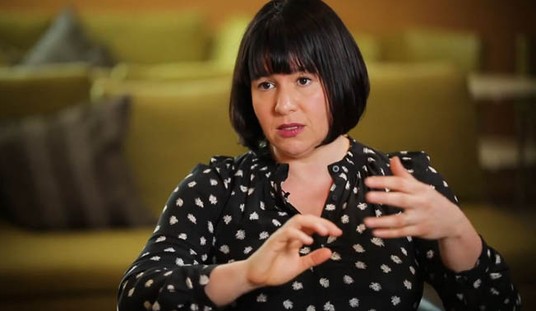We’re breaking records — in all the wrong directions. At least this week’s jobless-claims level dropped from the record set two weeks ago, but the US still had more than five million workers file for unemployment in the week ending April 11. That might have some lag from massive system failures in previous weeks, but the meltdown of the US workforce clearly has not stopped:
The Department of Labor now estimates we have nearly 12 million people drawing unemployment benefits, but we have had 22 million claims filed in the last four weeks alone:
In the week ending April 11, the advance figure for seasonally adjusted initial claims was 5,245,000, a decrease of 1,370,000 from the previous week’s revised level. The previous week’s level was revised up by 9,000 from 6,606,000 to 6,615,000. The 4-week moving average was 5,508,500, an increase of 1,240,750 from the previous week’s revised average. The previous week’s average was revised up by 2,250 from 4,265,500 to 4,267,750.
The advance seasonally adjusted insured unemployment rate was 8.2 percent for the week ending April 4, an increase of 3.1 percentage points from the previous week’s unrevised rate. This marks the highest level of the seasonally adjusted insured unemployment rate in the history of the seasonally adjusted series. The previous high was 7.0 percent in May of 1975.
The advance number for seasonally adjusted insured unemployment during the week ending April 4 was 11,976,000, an increase of 4,530,000 from the previous week’s revised level. This marks the highest level of seasonally adjusted insured unemployment in the history of the seasonally adjusted series. The previous week’s level was revised down by 9,000 from 7,455,000 to 7,446,000. The 4-week moving average was 6,066,250, an increase of 2,568,500 from the previous week’s revised average. The previous week’s average was revised down by 2,250 from 3,500,000 to 3,497,750.
To give a scale to this number, it missed economist projections by 200,000. That was the typical number of weekly jobless claims in total before the COVID-19 outbreak. It’s a massive, massive write-down on the jobs market, so bad that it calls into question whether it can bounce back at all once we start to reopen the economy.
The problem this crisis poses is that we long ago shifted from manufacturing-based economics to a service- and consumer-oriented economy. We rely on person-to-person economic activity and mass consumption more than mass production. A shock to the consumer sector like a sudden and massive elimination of jobs means a vastly reduced capacity to generate that economic activity. Add to that the rising levels of public and private debt that could end up defaulting as a result of this job-market collapse, and this suddenly starts looking like something other than a V-shaped recession/recovery.
This is one reason why Congress and the White House pushed so hard for a rescue package aimed at keeping paychecks flowing for the interim. The Trump administration has recognized this as well, which is why it has pushed to reopen the economy at the earliest possible time. Those stopgap measures haven’t worked to stanch the bleeding yet, but these claims deal with unemployment from the week prior to first week they were offered. Jobless claims have to be filed one week after a job loss, not the same week, in most cases.
Still, the money hasn’t reached employers yet, and there are apparently lots of problems in the bridge-loan program that was supposed to alleviate that:
An emergency loan program intended to get money swiftly into the hands of small businesses has all but collapsed under an unprecedented crush of applications and a shortage of funds, overwhelming agency officials and prompting urgent calls for action on Capitol Hill.
The Economic Injury Disaster Loan program, or EIDL, a long-standing program run by the Small Business Administration (SBA), is separate from the $349 billion Paycheck Protection Program for small businesses that is the subject of a political fight on Capitol Hill. …
The EIDL program received extra resources from Congress’s $2 trillion coronavirus rescue package at the end of March, including $10 billion to offer grants of up to $10,000 to small businesses within three days of applying for a loan. The grants are intended to serve as a bridge for small businesses to cover rent and other expenses while they wait for the larger loans to be approved.
Demand for the EIDL loans and grants quickly overwhelmed the system, leaving many applicants without funds weeks later, Democratic lawmakers and industry groups said. The SBA ― which accepts disaster loan applications itself rather than outsourcing that work to banks ― has received well over 3 million applications, a Democratic lawmaker and an SBA official said. A shortage of funds threatens to limit the size of grants and loans small businesses receive.
If the money doesn’t get there soon, though, there may not be much left to salvage. Where’s Congress in this crisis to deal with the issues arising from their emergency legislation?
Update: FINALLY …
https://twitter.com/realDonaldTrump/status/1250779261595783168
Trump should have said this a week ago, and he should be asking, “Where’s Congress?” in every briefing.








Join the conversation as a VIP Member